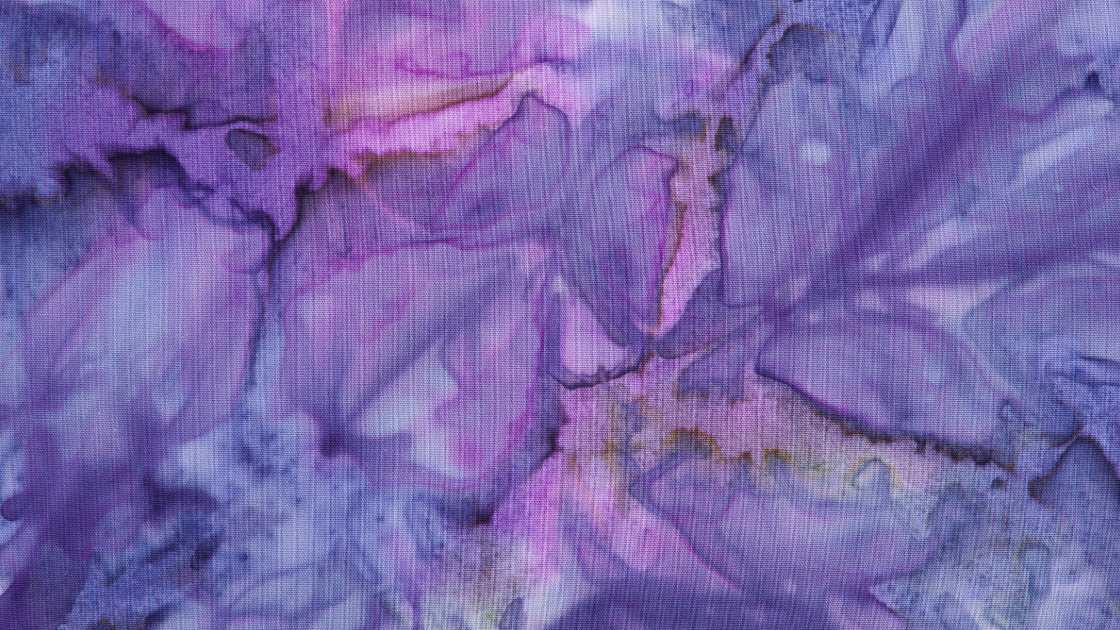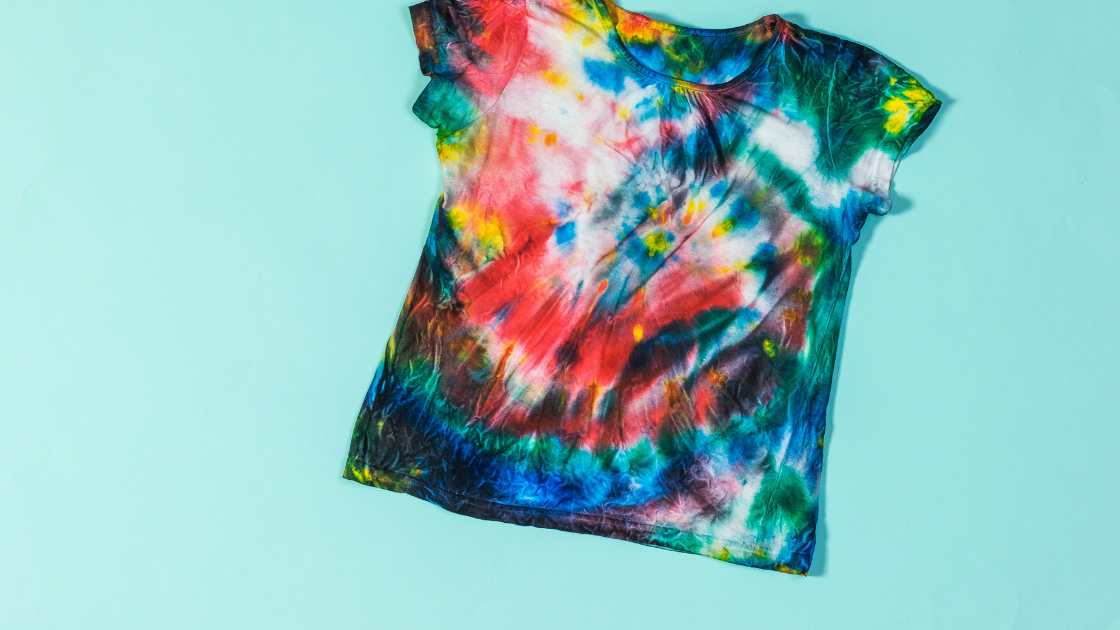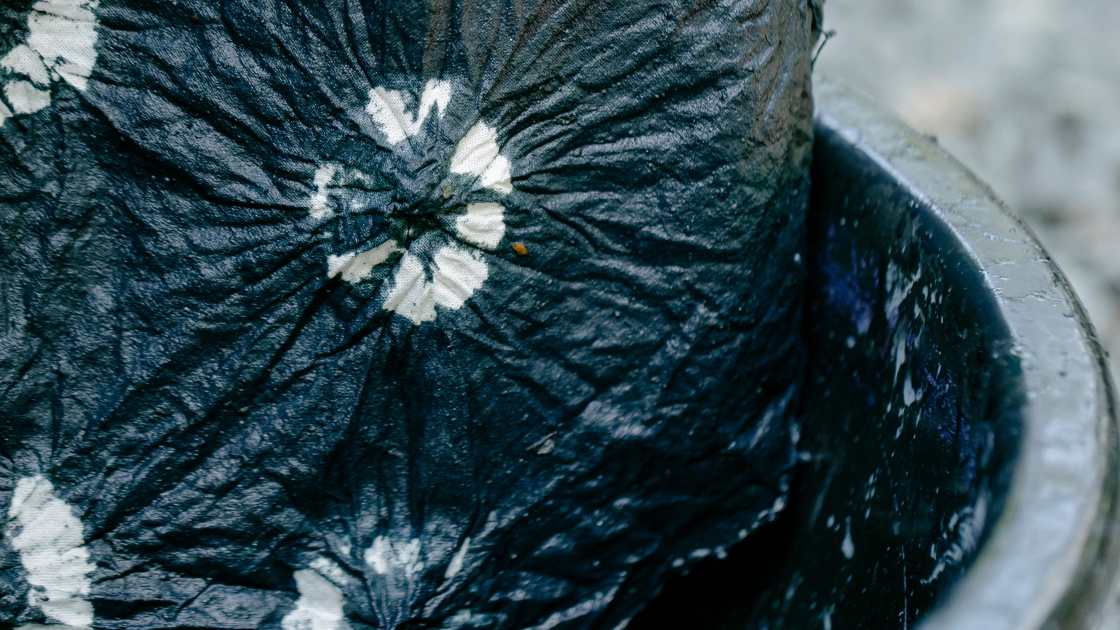Tie-dyeing microfiber is generally not recommended due to its synthetic nature. Microfiber’s resistance to absorbing liquids can inhibit the dyeing process.
Tie-dyeing, a vibrant and expressive way to add color to fabrics, traditionally works best on natural, absorbent materials like cotton. Attempting to tie-dye microfiber may lead to disappointment, as the synthetic fibers composed of polyester and polyamide tend not to hold dyes in the same way. We will discuss about Can You Tie Dye Microfiber?”
Despite this, creative enthusiasts looking to personalize their synthetic fabrics can seek out specialized dyes intended for synthetic materials. It’s important to understand the material’s limitations before start on a tie-dye project with microfiber, ensuring the process and effort will yield satisfactory results. Always follow dye instructions precisely and consider fabric composition when planning your tie-dye projects for the best outcomes.
The Nature Of Microfiber Fabric
Fibers finer than silk create microfiber fabric, famed for its softness and durability. Intricate weaving results in a dense yet lightweight material. But when it comes to adding color through methods like tie-dye, microfiber presents unique challenges.
Composition And Characteristics

Microfiber’s unique blend consists mainly of polyester and polyamide. The combination of these synthetic fibers forms a cloth with impressive attributes:
- Exceptional softness
- Enhanced durability
- Superior cleaning capability
It’s these qualities that have cemented microfiber’s status in the fabric world.
Comparing Receptivity To Dyes
Not all fabrics accept dyes equally. Natural fibers like cotton and wool drink in dyes readily, making them ideal for tie-dye. Microfiber, on the other hand, is more resistant:
| Fabric Type | Receptivity to Dye |
|---|---|
| Cotton | Highly Receptive |
| Wool | Quite Receptive |
| Microfiber | Less Receptive |
This difference affects dyeing techniques, colors’ vibrancy, and the overall process success. Experimenting with microfiber can yield unexpected results, often requiring alternative methods or specific dyes designed for synthetic fibers.
Tie Dye Basics
Exploring the vibrant world of tie dye opens endless possibilities. Fun and colorful designs await. But can you dive into this world with microfiber materials? Let’s unravel the tie dye basics, uncover the suitable materials, and grasp the dyeing process.
Traditional Tie Dye Materials

Cotton, linen, and silk are go-to fabrics for tie dye magic. They absorb dyes well, ensuring bright and lasting colors. But does microfiber fit in this list? With its unique composition, the answer isn’t straightforward.
- Natural fibers – Commonly used for tie dye
- Synthetic fibers – Tricky to dye without specialized dyes
- Microfiber – Challenges exist due to its synthetic nature
The Dyeing Process
The dyeing process is important for vivid and enduring results. Natural fibers need fiber-reactive dyes that bond at a molecular level. Will microfiber accept the same treatment? Its synthetic core calls for a different approach.
- Soak fabric in soda ash solution – Increases dye uptake
- Apply dye to fabric – Use proper techniques for even coverage
- Let dye set – Time for the color to fix
- Rinse fabric – Wash out excess dye for clear patterns
Challenges With Microfiber
Microfiber is unique compared to traditional natural fibers. This material presents specific challenges when attempting to dye it, especially with the DIY tie-dye approach. Follow these complications can help crafters make informed decisions and better prepare for their creative endeavors.
Resisting Colors
Microfiber’s resistance to color can be a significant obstacle for custom tie-dye projects. Unlike cotton, microfiber does not readily absorb dye due to its non-porous nature.
- Dye types must be specifically suited for synthetic fibers.
- High temperatures often required to ensure dye uptake.
- Pre-treatment of the fabric may be necessary to enhance color adherence.
Adhering Issues Of Synthetic Fibers
Synthetic fibers like microfiber pose adhesion issues during the dyeing process. Here are some hurdles you might encounter:
| Issue | Impact on Dyeing |
|---|---|
| Non-absorbent Surface | Prevents dye from sinking in |
| Slick Texture | Makes dye application uneven |
| Heat Sensitivity | Limits dyeing techniques and temperature settings |
Choosing the correct type of dye and employing techniques suited for synthetic materials will increase the chances of a successful outcome.
Prepping Microfiber For Tie Dye

Prepping Microfiber for Tie Dye is a unique adventure into the world of color and pattern making. Though microfiber’s synthetic nature poses some challenges, with the right preparation, even this material can maintain the vibrant personality of tie dye.
Cleaning And Preparation Tips
Begin with a clean slate. Ensure your microfiber item is free from oils, dirt, and fabric softeners. These can block the dye from absorbing evenly.
- Wash the microfiber with detergent free of scents and additives.
- Rinse thoroughly to remove any soap residue.
- Skip the fabric softeners to maintain the cloth’s absorbency.
- Dry the material completely before starting the tie dye process.
Applying A Base For Dyeing
To dye microfiber, creating an optimal base is essential. Unlike natural fibers, microfiber requires specific treatment to take on dye.
- Moisten the fabric evenly with water. This helps it accept the dye more uniformly.
- Prepare a solution of soda ash and water, following package instructions.
- Soak the microfiber item in the soda ash solution. Allow it to sit for at least 20 minutes.
- Wring out excess solution, but keep the fabric damp. It is now ready for the dye.
Selecting The Right Dyes
Tie-dyeing microfiber presents a colorful opportunity. Microfiber’s synthetic nature requires specific dyes. Not all dyes work well on synthetic fibers. Achieving vibrant, long-lasting results demands the right dye selection.
Dyes Compatible With Synthetic Fibers
The key to successful dyeing is using dyes compatible with synthetic fibers. Ordinary fabric dyes don’t adhere to microfiber. Instead, opt for dyes formulated for synthetics.
- Disperse Dyes: Best for polyester and nylon
- Acid Dyes: Often used for nylons
- Basic Dyes: Work on some synthetics
Perform a test swatch first to check color and durability.
Alternatives To Conventional Dyes
For eco-friendly options, alternatives to conventional dyes are available.
- Natural Dyes: Derived from plants and insects
- Fiber-reactive Dyes: Create strong covalent bonds
These might require extra steps for dyeing. Always read the manufacturer’s instructions.
Tie Dyeing Techniques For Microfiber

Exploring Tie Dyeing Techniques for Microfiber can be as thrilling as it is challenging. Microfiber, with its smooth texture and durable quality, presents a unique canvas for tie-dye enthusiasts. However, not all tie-dye methods work on such a synthetic fabric. Today, let’s unravel the mystery and find out how to infuse vibrant patterns into this modern material!
Adapting Traditional Methods
To tie-dye microfiber, you might need to twist traditional methods. Unlike natural fibers, microfiber repels water, complicating the dye’s absorption. But don’t let this deter you! Here’s how you can adapt:
- Pre-wash your microfiber items to remove any finishes that may resist the dye.
- Opt for alcohol-based dyes or fabric paints, as these adhere better to synthetic materials.
- Apply dye with a sponge or paintbrush for more control and saturation.
Remember, heat helps! Using an iron or a tumble dryer after dyeing can assist in setting the color.
Innovative Folding And Binding Techniques
Get creative with how you fold and bind your microfiber fabric. Each method influences the final design.
| Technique | Pattern Created |
|---|---|
| Accordion Fold | Linear, Zigzag |
| Spiral Twist | Swirls, Circles |
| Bullseye Bind | Concentric Circles |
Ensure your ties are snug so the dye doesn’t seep into unwanted areas. Rubber bands or zip ties work well for this purpose. After your microfiber piece has been dyed, let it rest. The longer it sits, the more intense the colors become.
Setting The Dye On Synthetic Materials
Excited about your vibrant tie-dye creation on microfiber? Awesome! But hold on a moment. Ensuring that the dye sticks around is key. Unlike cotton, microfiber is synthetic, so the dye job’s a bit more complex. Fear not! Special techniques can lock in those colors. Ready to make that tie-dye pop? Let’s explore how!
Heat Setting Methods
Heat helps dye bond with synthetic fibers like microfiber. Proper heat setting makes colors stay bright. Here are the top ways:
- Ironing: Protect the fabric with a cloth. Gently press a warm iron over it. Patience pays off here.
- Oven: Oven heat setting is an option. Be careful. Use low heat to avoid melting the fabric.
- Tumble Dry: Use a dryer on a low or medium setting. Keep it brief to prevent damage.
Chemical Fixatives For Longevity
Chemical fixatives add an extra shield to your design. They extend your tie-dye’s life on synthetic materials. Use these wisely:
| Type of Fixative | Application |
|---|---|
| Synthetic Fabric Dye Fixative | Follow the instructions. Mix with water. Soak your tie-dye. |
| Vinegar and Water Solution | Good for some dyes. Mix equally. Soak before rinsing. |
Remember to wear gloves and protect surfaces. Fixatives sometimes need ventilation. Read labels for safety tips.
Finishing Touches
After experimenting with tie dye on microfiber, finishing touches are necessary. They set the longevity and vibrancy of your design. Read on to make sure your tie-dye art stays brilliant wash after wash!
Rinsing And Washing Post-dye
The first step after the dye sets is rinsing out excess dye. Start with cold water. Increase the temperature slowly. This helps to prevent the dye from bleeding. Once the water runs clear, it’s time to wash.
- Use a gentle, dye-friendly detergent.
- Set your washing machine to a delicate cycle.
- Wash your microfiber separately.
Pro tip: Add a cup of vinegar during the rinse cycle. Vinegar helps seal the color in fabrics. Plus, it’s eco-friendly!
Maintaining The Vibrancy
To keep your colors as vivid as day one, here are some easy steps to follow:
| Step | Action |
|---|---|
| 1 | Avoid harsh chemicals. |
| 2 | Turn the item inside out before washing. |
| 3 | Wash in cold water only. |
| 4 | Line dry out of direct sunlight. |
Remember, heat is the enemy of tie-dye. Always air dry your microfiber items. The dryer may cause your masterpiece to fade. To preserve the dye, skip the dryer and opt for patience.
Creative Projects With Tie Dyed Microfiber

Tie-dyeing is a blast from the past that’s making a huge comeback, and it’s not just for cotton anymore. Enter the world of microfiber, a modern fabric loved for its durability and soft texture. E
Touchy color and let creativity flow by tie-dyeing microfiber for an array of exciting projects. Ready to dive in?
Home Decor Applications
Brighten up your home with tie-dyed microfiber accents. Take ordinary items and splash them with color for a fresh, vibrant look. Here are several ways to infuse your living spaces with tie-dye magic:
- Cushion Covers: Transform your lounge with a burst of color.
- Bed Linens: Wake up in a dream of swirls and patterns.
- Tablecloths and Napkins: Make mealtime a colorful event.
- Curtains: Catch the sunlight with a colorful glow.
Experiment with different techniques like spirals or bullseyes for unique effects.
Fashion And Accessory Ideas
Stepping out in style or accessorizing has never been more fun. Use tie-dyed microfiber to create fashion statements that turn heads. Check out these chic ideas:
- Tote Bags: Carry your essentials in a one-of-a-kind creation.
- Scarves: Wrap up in a cozy, vibrant microfiber scarf.
- Hats: Shield from the sun with a splash of color.
- Shoe Accents: Add flair to footwear with colorful laces or insoles.
With tie dye, your style is unique, showing off your vibrant personality.
No matter the project, the key to tie-dye success is embracing your imagination. The harmonious blend of colors in tie-dye designs ensures every piece is as unique as you are.
Frequently Asked Questions On Can You Tie Dye Microfiber
What Fabric Can You Not Tie-dye?
Fabrics made from 100% acrylic, 100% polyester, and water-repellent materials are not suitable for tie-dying due to their inability to absorb dye well.
What Kind Of Dye For Microfiber?
Use dispersed dyes specifically designed for synthetic fibers to dye microfiber fabrics effectively. These dyes ensure vibrant, long-lasting color adherence to the material.
Can You Dye 100 Polyester Microfiber?
Yes, you can dye 100% polyester microfiber, but it requires special dye and a high-heat process for the color to take hold effectively. Opt for disperse dyes and follow the specific instructions for the best results.
Does Tie-dye Work On Synthetic Fabric?
Tie-dye is less effective on synthetic fabrics because they don’t absorb dye as well as natural fibers. For best results, use fabrics with a high natural fiber content like cotton.
Conclusion
Tie-dyeing microfiber may pose a challenge due to its synthetic nature. Yet, creative spirits never shy away from experimentation. To ensure success, choose the right dye and follow specific techniques for vibrant designs. Accept the trial and error process to add a splash of color to your microfiber fabrics.
Happy dyeing!

